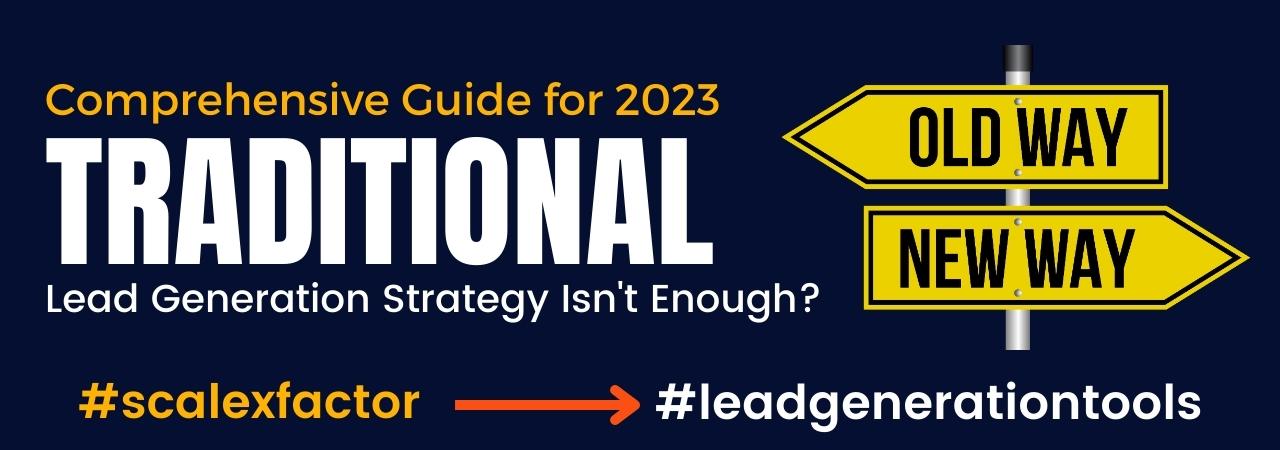Rethinking Lead Generation: A Comprehensive Guide for 2023
While traditional lead generation strategies have served us well in the past, they are no longer sufficient in today’s highly competitive online environment. In 2023, traditional lead generation strategies no longer suffice due to rapid shifts in consumer behavior, technology, and market dynamics.

In the ever-evolving landscape of digital marketing, staying ahead of the curve is imperative for businesses looking to thrive in 2023. This article will delve into the reasons why the traditional lead generation approach falls short and offer insights into a more effective alternative.
The Decline of Traditional Lead Generation
1. Saturation of Old Methods
Traditional lead generation methods, such as cold calling and mass email marketing, have become less effective due to oversaturation. Inboxes are inundated with promotional emails, and consumers are increasingly wary of unsolicited calls. This oversaturation has led to diminishing returns and frustration for both businesses and potential leads.
2. Lack of Personalization
One major shortcoming of traditional lead generation is the lack of personalization. Generic, one-size-fits-all approaches no longer resonate with modern consumers. Today’s audience expects tailored experiences and solutions that cater to their specific needs and preferences.
3. Inefficient Use of Resources
Traditional lead generation can be resource-intensive. Cold calling, for instance, requires a significant investment in manpower and time, often yielding limited results. In contrast, modern lead generation techniques offer a more efficient allocation of resources.
Embracing Modern Lead Generation Strategies
4. Content Marketing and SEO
Content marketing and search engine optimization (SEO) have emerged as powerful tools for lead generation. By creating high-quality, informative content that addresses the pain points of your target audience, you can attract organic traffic to your website. Effective SEO techniques ensure that your content ranks well in search engine results, increasing visibility and credibility.
5. Social Media Engagement
In today’s digital age, social media platforms are a goldmine for lead generation. Engaging with your audience on platforms like Facebook, Instagram, and LinkedIn can help you build a loyal following and generate leads. By providing valuable content and fostering meaningful interactions, you can turn social media users into potential customers.
6. Email Marketing 2.0
While traditional email marketing has lost some of its luster, modern email marketing strategies, such as automated drip campaigns and personalized messaging, are incredibly effective. By segmenting your email list and sending targeted content, you can nurture leads and guide them through the sales funnel.
7. Interactive Content
Interactive content, such as quizzes, surveys, and webinars, not only engages your audience but also collects valuable data. This data can be used to tailor your marketing efforts further and convert leads into customers.
Conclusion
In summary, 2023’s lead generation landscape is marked by digital dominance, evolving consumer preferences, and the emergence of innovative technologies.
The landscape of lead generation has evolved significantly in 2023. Traditional methods, once reliable, are now overshadowed by more efficient and personalized strategies.
To remain competitive, businesses must adapt, embracing change, personalization, and a multi-channel approach to connect with modern consumers effectively.
To stay competitive and drive growth, businesses must adapt to the changing times. Embracing content marketing, SEO, social media engagement, and modern email marketing will not only generate leads but also foster lasting relationships with your audience. It’s time to leave behind the old ways and embrace the future of lead generation.




